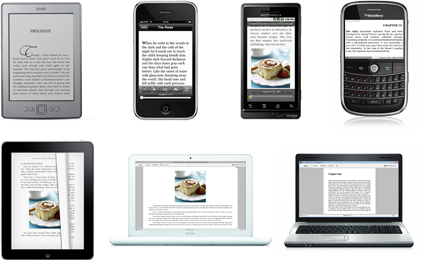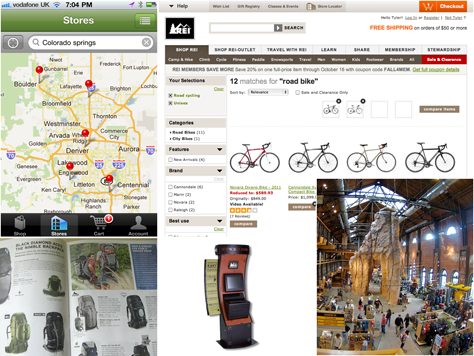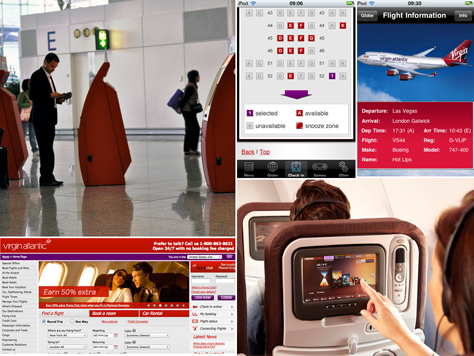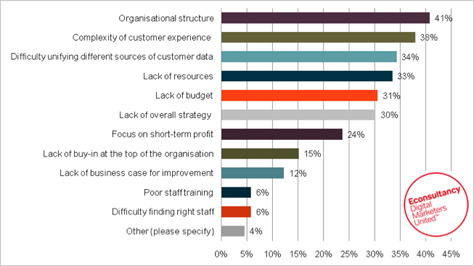
Books, newspapers, and magazines have not only gone digital, they’ve gone ubiquitous, contextual, and formless. The message is now abstracted from the medium, and the book is a channel-independent experience—whether held in its physical form, heard as the spoken word, or read on an eReader, mobile phone, or desktop computer.
The invention of the printing press transformed the physical object that is a book from the output of human transcription to that of mass production, ushering in the era of information as a physical object. More recently, mass adoption of the World Wide Web and a plethora of Internet-connected devices has brought us into the digital era of information. But we are on the cusp of yet another technological sea change. The pendulum that swung from physical to digital is now swinging back to the real world. However, this time information has become formless, contextual, and ubiquitous. In the words of Andrea Resmini and Luca Rosati, “[Information] is bleeding out of the Internet and out of personal computers, and it is being embedded into the real world.” [1] Welcome to the new cross-channel, multiplatform, transmedia information age.
A Sign of What’s to Come
As goes the book, so goes every product and service under the sun. Seamless, cross-channel experiences are the way of the future, as technology fades into the background and the personal, physical, and social context determine the methods we use to interact with information. But this isn’t a problem for the distant future; designing effective cross-channel experiences is a problem that we must address here and now.
Retail
Most brick-and-mortar retailers mail out the occasional print catalog, provide phone service, and have online stores, with the more adventurous offering smartphone-friendly Web sites or applications, as in the example shown in Figure 2.

However, these channels aren’t isolated from one another; increasingly, they overlap. Forrester’s Patti Freeman Evans found that 70% of consumers research online, then buy offline. [2] A 2010 report by NCR Corporation [3] found that
- 43% of consumers want to use their mobile phone for price comparison while out shopping.
- The vast majority of consumers prefer a seamless experience across channels:
According to this report: “87% want a similar way to access products and services … whether online, in the store, on their mobile phone, or using a self-service device.”
Travel
Traveling by plane is a quintessentially multichannel experience. Once you know where you want to go, there is the messy business of booking the flight—perhaps using your laptop; checking in 24 hours before your flight on your smartphone; traveling to the correct airport terminal, then using the kiosk to print your boarding pass; interacting with a customer service person to check in your luggage; running the security gauntlet, where you present either your paper boarding pass or an electronic version on your phone; and finally, sitting down in your seat on the aircraft, where you browse the movie selections on the entertainment console.
A 2011 report on the usability of travel Web sites by Webcredible [4]—in addition to placing Virgin Atlantic’s Web site at the top of its list, shown in Figure 3—emphasized the importance of providing consumers with a seamless cross-channel experience:
“As consumers become more and more demanding in the digital space, the travel industry will need to be more dedicated to the usability and user experience across all of their channels to gain customers and build loyalty.”

Banking
Managing your money often results in a dynamic interplay between channels, as Figure 4 shows. But while you could likely achieve many tasks at your local bank branch, a nearby ATM, over the phone, on your home computer, or on your smartphone, each channel is likely convenient in some situations, but a hassle in others. Your mobile phone is well suited to quickly checking your account balance on the go. However, you might find it easier to use online banking on your laptop to pay the monthly bills.

Ernst & Young’s 2011 report on global consumer banking [5] found that, while 66% of respondents were dissatisfied with their existing mobile banking, competition among banks to provide a seamless experience across channels will be fierce:
“Practical innovations across channels that leverage technology to deliver a more seamless and personalized experience will therefore be a major competitive battleground in all retail banking markets.”

![A service blueprint created by Brandon Schauer [8]](png/6-service-blueprint.png)
